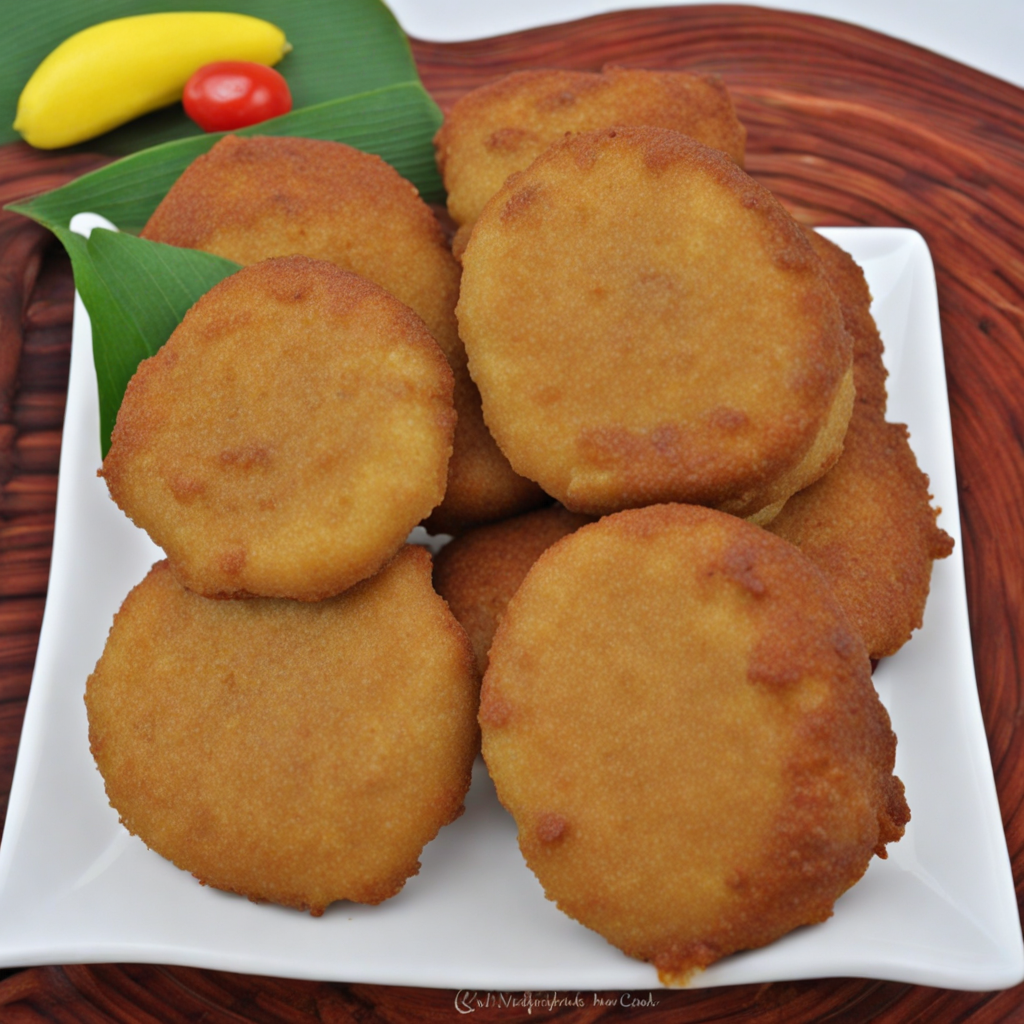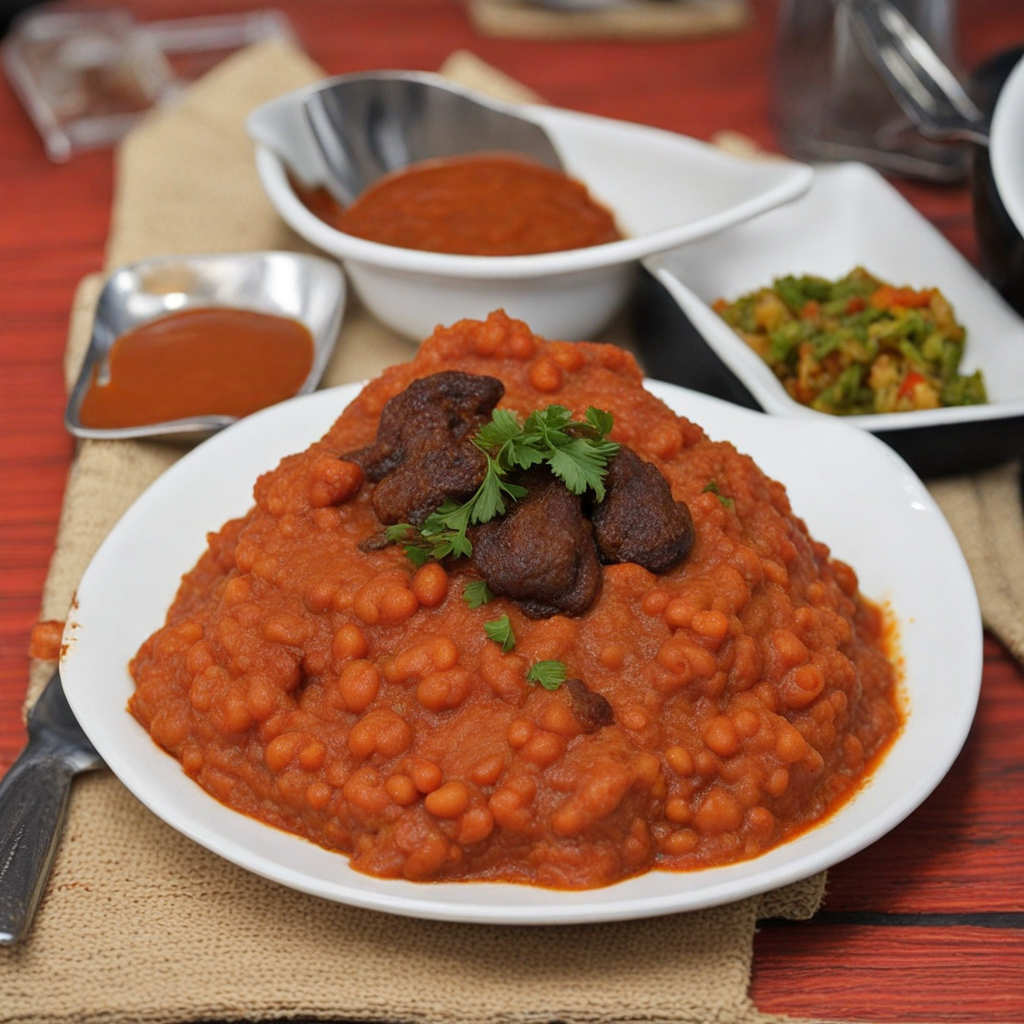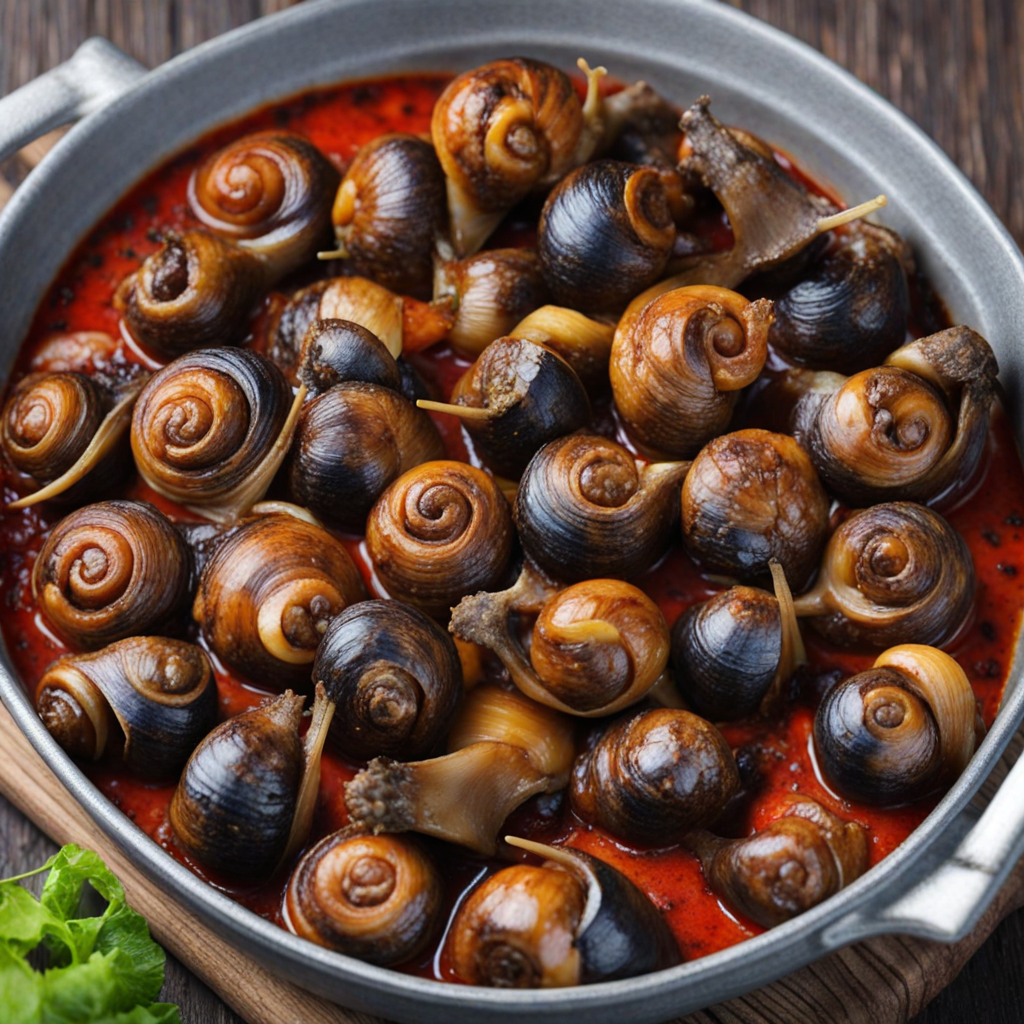Bean Cake
Bean Cake, known locally as Akara, is a popular Nigerian snack that tantalizes the taste buds with its unique flavor and texture. Made primarily from blended black-eyed peas or brown beans, it is seasoned with onions, peppers, and various spices to create a savory delight. The mixture is shaped into small round cakes and deep-fried until golden brown. The exterior is crispy, while the interior remains soft and fluffy, offering a delightful contrast that makes each bite an experience to savor. The flavor profile of Bean Cake is rich and hearty, with the earthy taste of beans complemented by the aromatic spices. Depending on the region and individual preferences, variations may include the addition of bell peppers, scotch bonnet peppers for a spicy kick, or even vegetables like carrots and spinach for added nutrition. This versatility allows Bean Cake to cater to a wide range of palates, making it a beloved choice for both locals and visitors seeking to explore Nigerian cuisine. Often enjoyed as a breakfast item or snack throughout the day, Bean Cake is typically served with a side of spicy pepper sauce or enjoyed plain. It can be paired with a warm beverage like Ogi (fermented cereal pudding) or consumed as a quick and satisfying street food. The communal nature of Bean Cake, often shared among friends and family, adds to its charm and significance in Nigerian culture, making it a dish worth discovering for anyone looking to expand their culinary horizons.
How It Became This Dish
The History of Akara: A Culinary Treasure of Nigeria Akara, a beloved dish in Nigeria, is a deep-fried fritter made primarily from black-eyed peas, spices, and sometimes onions or peppers. This delectable snack is not just a staple in Nigerian cuisine; it is also a dish steeped in history, cultural significance, and regional variations. To understand Akara is to embark on a journey through the landscapes of Nigeria, tracing the roots of its ingredients, the evolution of its preparation, and its role in the social fabric of Nigerian life. Origins of Akara The origins of Akara can be traced back to the indigenous peoples of West Africa, where black-eyed peas have been cultivated for centuries. Archaeological evidence suggests that the domestication of black-eyed peas occurred around 2000 BC in West Africa. These legumes were not only valued for their nutritional benefits but also became a staple in the diets of various ethnic groups across the region. The preparation of Akara likely emerged from the culinary traditions of the Yoruba people of southwestern Nigeria, who are often credited with popularizing this dish. The Yoruba word "Akara" translates to "bean cake," a fitting name that reflects its main ingredient. Traditionally, Akara was prepared during festive occasions, religious ceremonies, and social gatherings, serving as both a treat and a symbol of hospitality. Cultural Significance Akara holds a special place in Nigerian culture, transcending its role as mere street food. It is a dish that embodies community, celebration, and sustenance. In many Nigerian households, Akara is often served as a breakfast item, accompanied by pap (fermented corn pudding) or custard, fueling the day ahead. It is also a popular snack for street vendors, who fry the fritters in large quantities, making them accessible to all. The preparation of Akara is often a communal activity, with families gathering to soak, blend, and fry the beans. This collective effort fosters a sense of togetherness, as stories and laughter are shared over the sizzling sound of Akara being fried. During festivals, Akara is frequently part of the offerings made to guests, symbolizing goodwill and abundance. It is also associated with various rites of passage, such as weddings and naming ceremonies, where the presence of Akara signifies the joy of celebration. The Evolution of Akara Over the years, Akara has evolved in its preparation and presentation, reflecting the diverse culinary practices within Nigeria and the influence of globalization. Traditionally, Akara was made by soaking black-eyed peas overnight, then peeling the skins by rubbing them between the hands. The peeled beans were blended into a smooth paste, seasoned with salt, spices, and chopped onions, and then deep-fried until golden brown. While the classic recipe remains popular, variations have emerged, particularly with the inclusion of other ingredients. In some regions, Akara is enhanced with bell peppers and spices, giving it a unique twist. Similarly, the use of different legumes, such as cowpeas, has been embraced, showcasing the adaptability of this dish and the creativity of home cooks and street vendors alike. The advent of modern cooking equipment has also influenced how Akara is made. Electric blenders have replaced traditional mortar and pestle, and deep fryers have become commonplace in many kitchens, allowing for more consistent results. However, the essence of Akara—the communal spirit and the celebration of flavors—remains unchanged. Regional Variations Nigeria is a nation rich in ethnic diversity, and this diversity is reflected in the regional variations of Akara. In the northern regions, for instance, Akara may be made with different legumes, incorporating local spices and flavors that cater to the taste preferences of the inhabitants. The Hausa people, known for their distinct culinary practices, have their own version of bean fritters, which may include additional spices like cumin or ginger. In the southeastern region, Akara is sometimes served with a spicy dipping sauce made from ground pepper and tomatoes, adding an extra layer of flavor that complements the fritters. The Yoruba version remains the most recognized, often celebrated for its simplicity and the natural flavor of the beans. Akara in Contemporary Nigeria In contemporary Nigeria, Akara continues to thrive as a favorite snack, enjoyed by people of all ages. Street vendors are ubiquitous in urban centers, frying Akara in large batches and serving them hot, often with a side of pepper sauce. The rise of food culture on social media has also contributed to the popularity of Akara, with food enthusiasts sharing recipes, variations, and tips for perfecting this classic dish. Moreover, Akara has found its way into international cuisine, with Nigerian restaurants abroad showcasing it as a symbol of Nigerian hospitality. This exposure has not only introduced Akara to a global audience but has also led to a renewed interest in traditional Nigerian ingredients and methods of preparation. In recent years, there has been a growing movement towards health and sustainability in food choices. As a result, many chefs and home cooks are experimenting with healthier frying methods, such as baking or air frying, while still maintaining the core flavors of Akara. This evolution reflects a broader trend in which traditional foods are being reimagined to suit modern dietary preferences without losing their cultural significance. Conclusion Akara is more than just a delicious bean fritter; it is a culinary symbol of Nigeria’s rich history, diverse cultures, and communal values. From its ancient roots to its contemporary iterations, Akara has adapted and evolved while remaining a beloved element of Nigerian life. Its presence at breakfast tables, social gatherings, and festive occasions speaks to its enduring significance as a dish that fosters connection and celebration. As Nigeria continues to grow and change, so too will Akara, proving that while recipes may evolve, the heart of a dish often lies in its ability to bring people together, one delicious bite at a time. Whether enjoyed on the bustling streets of Lagos or at a family gathering in a remote village, Akara remains a testament to the richness of Nigerian culinary heritage and the spirit of its people.
You may like
Discover local flavors from Nigeria







